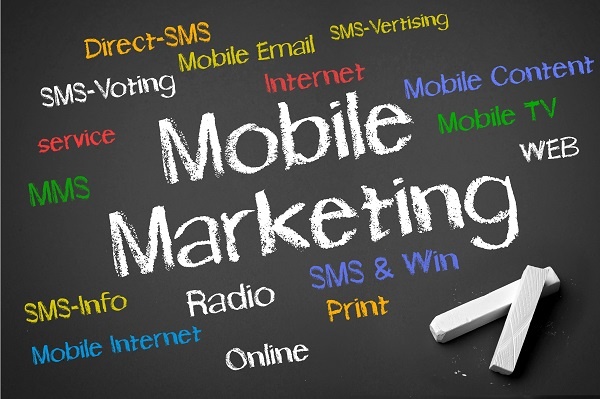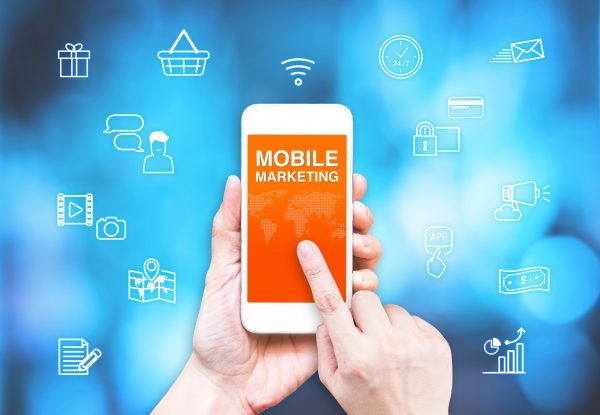
by Marelise da Silva | Mar 12, 2019 | Mobile Marketing
Look around you and you will see many people enamoured with the content on their phone. If you’re not paying attention to mobile devices in 2019, then you are going to get left behind. Here are five statistics that may change your digital marketing strategy this year:
- Users Spend 69% Of Their Media Time On Smart Phones
This means you are more likely to engage with people on their mobile phones than on desktop computers. If you are not optimising for mobile, then you could be alienating your target audience.
- 80% Of Social Media Time Is Spent On A Mobile Device
If people are engaging with your social media content, then they are probably doing it on their smartphones. Think mobile first.
- 57% Of Users Say They Won’t Recommend A Business With A Poorly Designed Website
Your credibility is on the line. If you are not optimising for mobile, you are losing business.
- Mobile Email Opens Have Grown By 180% In The Last 3 Years
Email is not dead, in fact, it is actually growing. Are you checking your emails on mobile devices? So are your clients.
- By 2019, Mobile Advertising Is Expected To Represent 72% Of All US Digital Ad Spend
Mobile marketing isn’t going anywhere. The chances are good that your competition is already investing in it – and you should, too.
Need help with your mobile marketing or digital marketing campaign? Then contact WSI OMS today.

by Francois Muscat | Feb 26, 2019 | Mobile Marketing
Your mobile site needs to be designed with conversions in mind. Here are a few tips from our mobile marketers and web designers:
- Do: Design With The User In Mind
People often approach a website design company with an idea in their mind of what they want their websites to look like. Many times, it is a show-piece for their company, instead of a tool that can help their potential clients become paying customers. Design with the user in mind and focus on how the user will navigate the site. Make it simple for them to sign up, complete a purchase or find the information they are looking for.
- Do: Design For Speed
Your website needs to be designed for fast loading times. You only have three seconds to make an impression on a potential customer, so you have lost the client if they have to wait more than a few seconds for your pages to load. Partner with a designer who also specialises in mobile marketing. They will know how to resize and adjust your website’s images for fast loading times.
- Don’t: Make It A Replica Of Your Desktop Site
The way people browse desktop websites is completely different to mobile websites. Design with mobile users in mind first, because mobile searches have already surpassed desktop searches. Your mobile site should be built for people who are scrolling on small screens and want to find what they are looking for quickly and with ease.
- Don’t: Assume You Know How People Are Using Your Site On Mobile
Use your Google Analytics to find out how people are browsing your website on their mobile phones. The results may surprise you, and it can help you to improve your design to optimise the experience for visitors.
- Do: Make CTA’s Easy To See
People need to see your calls to action loud and clear. You need to tell them what steps to take. Make the CTA’s easy to see and click on.
Need help with your mobile content marketing? Then contact WSI OMS today.

by Marelise da Silva | Nov 26, 2018 | Mobile Marketing
Push notifications are a great way to engage – they are free and they are effective. When done right, they can really boost conversions and engagement with your mobile app. Here are the top things to consider to ensure you are using best practice for push notifications:
Consider who the audience is and what type of communication they want to receive to avoid confusing them. Segment your audience into categories so that you can send the right message to the right person. If you are running a news app, for example, breaking news for one person might not be considered breaking news for another person.
You need to manage the push notifications that you send against the ones that have been opened. Push notifications that have a very low open rate can be indicative of a problem with the quality of your notification. When you fatigue users with push notifications that are not effective, it can result in your app being deleted off their device. You can query the Apple and Google Quality of Service API, which will let you know which device tokens fail to receive the push. When you see a campaign or a push that has resulted in deletions or uninstalls of your app, you need to take this information back into your strategy and consider what you need to change.
Some of the contextual information you need to take into consideration with push notifications is the following:
- The Time Of Day,
- The Time Zone, And
- The frequency of the push notifications.
Your industry and the type of company you are, for example, will impact the time of day that you send push notifications. If you are a retailer, it would be more beneficial to send a push notification around mid-morning as opposed to first thing in the morning or in the evening.
These are only three of the best practices you need to keep in mind for push notifications. Need help with your mobile marketing strategy? Then contact WSI OMS today.

by Francois Muscat | Jun 18, 2018 | Digital Media Marketing, Mobile Marketing
For the first time ever, Google is ranking your website based on the mobile version of the site as opposed to the desktop version. This could mean big gains in search engine traffic for some people and big drops in traffic for others.
The first thing you need to know about the Google mobile-first update is that you need to have a mobile equivalent of every single page on your website. So make sure that you don’t just have a desktop version of your website – you also need a mobile version.
The second thing you need to do is make sure that all of your pages pass the Google mobile testing tool site. You can put your pages into the Google mobile testing tool to see if it passes the test. You can do this on a template by template basis, so you can check your home page, followed by your category pages, your main service pages, your landing page template, and make sure that all of those pages pass.
In addition to that, you can go inside of the Google Search Console and check out the mobile usability report, which will crawl all of your pages and it will tell you whether or not they are mobile ready. If you do these two things, you will be in a good position to diagnose whatever mobile issue you might have.
Need help with your mobile marketing or digital marketing strategy? Then contact WSI OMS today.

by Francois Muscat | May 9, 2018 | Mobile Marketing
Native advertising has been all the rage in the media industry for quite some time. Essentially, native advertising is sponsored or paid for content that is written and crafted in such a way that it blends into the publication or platform where it is being published. This adds value to the publisher (because they’re getting paid), the target audience (because it’s the type of content they want to consume) as well as the advertiser (because they’re reaching their target audience).
As one can expect, native advertising has made its way to printed magazines, blogs, websites, social media and even mobile platforms. There are, however, a few things to keep in mind if you are embarking on a mobile marketing strategy that involves native advertising. With over 50% of Google searches coming from mobile devices, it’s worth your while to make sure you’re getting it right.
Cell phone screens are small, so any type of ad that you create shouldn’t hi-jack this space. If the ad you are running pops up on a person’s screen and they are unable to close it or click away, the ad won’t be doing your brand any favours. Your native mobile ad will only be appreciated if it flows seamlessly with the content that your reader is already busy consuming on their phones.
Native ads need to be non-obtrusive. It’s not enough that your ad works across platforms – it has to be designed with a mobile-first approach. If you need to make sure that your native mobile ads are aligning with user intent, then contact WSI OMS today.

by Marianna Muscat | Feb 6, 2018 | Mobile Marketing
So, you’ve developed a one-of-a-kind mobile app, added it to online stores, and you’re waiting for thousands of people to download the app and review it…. But nothing is happening. What’s wrong? The problem is that you’re not considering mobile app marketing tactics. Here are a few ways to increase downloads for your mobile marketing app:
A video showing how your app works and what features it has, is a must. Hire a professional voice over artist as well as a video editing company so that you can make the video as impactful as possible. Include subtitles and a video description, upload it to YouTube, and add it to any relevant marketing pieces about your app.
You may be too close to the project to objectively consider the best keywords to use to market your app. Use Google’s AdWords Keyword Tool or hire an internet marketing expert to help you with this. Including keywords in the name of the app and the description can go a long way in helping people find your app in Google’s Play Store and the Apple Store.
- Get Your Mobile App Description Translated
If you are marketing your mobile app in different geographies, you need to get the description translated into all the relevant languages. Instead of hiring someone to do a direct translation, find someone who has a bit more local knowledge so that local phrases and sayings can be included in the wording.
Mobile content marketing plays a huge part in driving traffic to your app. You will need a comprehensive content strategy plan to make sure different messages reach your target audience at the right times.
WSI OMS offers a range of mobile marketing services; we can help you market your new app. Contact us for more information today.






